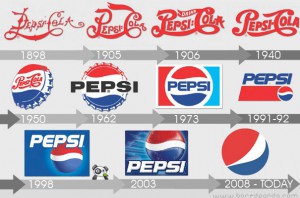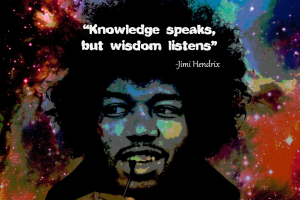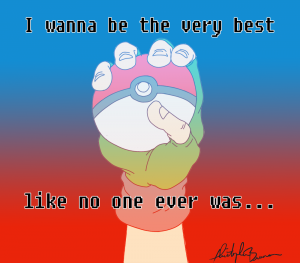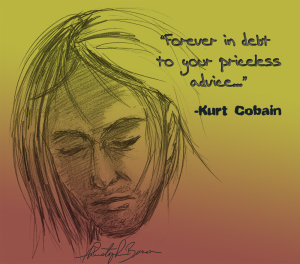This article talks about how astronauts will start using 3D printers to help with their activities regarding space. The Made in Space co-founder and chief strategy officer named Mike Chen, hopes that other creative people get a chance to show innovative artwork, projects, and designed fit for science experiments. Mr. Chen also goes off saying that 3D printing could expand all possibilities.
Steve Jobs Report
Steve Jobs Report
Steve Jobs was an extraordinary man who didn’t reform to society’s definition of educational status. Jobs was a being who transcended what others called the “norm” and proved that with creative thinking, coupled with an indepth life experiences, success is possible. Jobs created technology that stood out in the 20th century and beyond. Steve Jobs proved that you can stand up against the status quo and succeed. He looked beyond the barriers and did not accept defeat. Steve Jobs was an innovative and creative force behind each of his accomplishments and failures. He didn’t let the world define him or his thoughts. Instead, he knew what he truly desired to do and set forth.
Steve Jobs was born on February 24, 1955 in San Francisco, California. Although his parents were well-educated – Mother was a speech therapist and Dad was a political science professor, they felt that they were not prepared, let alone married , to raise a child. It might be noted that soon after birth of Steve, they got married and had another child. They eventually gave their unnamed child up for adoption.
They did one good deed for him. He was already born with smart and creative genes! His adoptive parents, Clare and Paul worked as accountants and in the Coast Guard, respectively. Since his father was a machinist, he and Steve would spend hours together taking apart and reassembling electronic machinery. That is where his love of electronics came from.
As he engulfed himself in formal education, he only met frustration. It was later learned that he was dyslexic – he read/and or wrote certain letters backwards. Although quite innovative and bright ( his teachers wanted to skip him a grade), the schools’ curriculum did not challenge him enough. As
with any child, when they are not challenged, “other things” begin to take shape, like acting out or
becoming the class clown. From elementary through his first year in college, Steve was very ‘artsy’ to say the least and the traditional classes that he was in, didn’t suit him well. Eventually, becoming very dissatisfied, Steve decided to go on his very own personal journey and dropped out of college; only to return to classes that suited what he had planned for later on in life. He sat in unofficially in creative classes like writing that would prove to be helpful later on.
After taking a job as a video game designer with the top gamers during that time, Atari. Jobs began looking for new territory. With a new found friend, Steve Wozniek, Steve started the Apple Computers. It was not so easy at first. Lots of sacrifices had to be made in order to jumpstart it. Steve had to sell his Volkswagen and Wozniek had to also sell his beloved scientific calculator. This all began in Steve’s family garage. He was just twenty-one years old when he gave birth to Apple Computers. Those two started an revolution amongst the still “young” computer industry by the 1980’s. Computers before then were quite large and cumbersome and were not accessible to the everyday consumers.. He and his partner, Wozniek, changed that scenario by democratizing the technology and making the computers smaller, cheaper and intuitive for the ‘Regular Joe’. The first computers yield their Apple Corporation $774, 000 that first year. When the Apple 2 was introduced three years later, the sales increased by 700% to $139 million.
In 1980, the Apple Computer became a publicly trade company with a market value of $1.2 billion on its first day of trade. As with the success of any good business, there are failures. With Apple’s next products, consumers’ confidence began to fade away as Apple was riddled with design flaws and disappointments.
Another accomplishment of Steve’s is his purchase of an animation company from George Lucas of Star Wars fame. This was named Pixar Animation Studio. Steve believed so whole-heartedly in its success that he invested $50 million dollars of his own money. This studio went on to produced animation films, delighting people of all ages and background, like Toy Story, Finding Nemo, and The Incredibles. The studio eventually merged with Walt Disney Studios in 2006.
After 2004, Steve’s Apple introduced the revolutionary products such as the MacBook Air, the iPod, iPhone and iPad. In 2008, the iTunes became the biggest music retailer in America, with Walmart running a close second.
In conclusion, I believe the Mac and iProduct lines relate to Art and Design/Graphic Arts from the way each of their products were advertised. The iPods lines were advertised as colorful, fun, had a likeable design and easy to use. While the Mac computer lines are well known within the art community for handling art related programs like Photoshop, in a way, some could argue better. Steve Paul Jobs was a man set apart from many men. In 2007, Steve was diagnosed with pancreatic cancer. He was a very private man who didn’t divulge much information about his personal life, other than he was married with three children. He tried numerous homeopathy regimes to combat this disease, yet it overcame him ten years later and he passed away on October 5, 2011.
Resources
• http://adage.com/article/agency-news/book-jobs-a-student-advertising/230612/?utm_source=daily_email&utm_medium=newsletter&utm_campaign=adage
• http://www.biography.com/people/steve-jobs-9354805#awesm=~oEGPn4jK0E6SEX
• http://www.maclife.com/article/gallery/14_best_inventions_steve_jobs
Chris Brunson Logo

This is my logo/watermark I’ve created and use for my artwork. It’s suppose to look like the ink when smashed down from a rubber stamp. There are even blots for detail. I did come up with an idea to make it more personable by wanting to add a silhouette of a pencil, a drawing tablet pen, and a paint brush behind the letters; showing the mediums I use regularly. CB logo/watermark
Field Trip to United Federation of Teachers
The field trip to the UFT was an interesting one. The class was sent on a thorough tour of the print station grounds that was located on the lower level of the huge building. There we met the friendly director who, first,showed us various printers that were used for different purposes. The was a HUGE printer that was as long as a teachers’ desk that was used for printing out poster sized images, while there were some smaller ones that were used for creating fliers, and other print resources, The director told us that for every image they had, it was generally a .PDF file since it’s one that’s of universal use. The director also let every student hold a small device that was used to magnify the pixels of a color print.
The director walked us through other corridors that led to machines that did folding work, printed mass addresses and bar-codes on envelopes, showed us their potential speeds and explained the mathematical side of every process, He even allowed me to keep one of their prints that they made a surplus number of.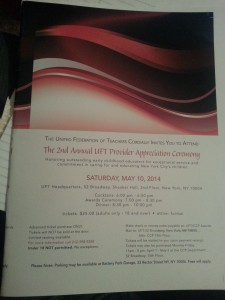
After some Q&A, the director talked so passionately about how every machine he owned there was like his baby/children to him. You could really tell he loved his work and every last of his machines.
Pepsi Cola logo evolution
Christopher Brunson
Graphic Communication
Pepsi-Cola Logo Evolution
The well known company I decided to write about for this assignment is The Pepsi-Cola Company’s logo. Once called ‘Brad’s drink’, the beverage has been around since the early 1890’s and was established by a man named Caleb Bradham who, in 1898, rechristened his drink as Pepsi-Cola.
Throughout the years the Pepsi-Cola Company’s logo underwent several changes that were drastic and some familiar. Bradham’s first logo for the company was in script in 1898 and changed a bit in another revisions that included the small slogan “Drink”. Much later in 1950, a bottle cap logo from the company emerges it’s drastic change which includes the colors blue and white. This logo then followed a second revision in 1905 but kept it’s added colors into every new logo then afterwards. From 1973 into 2003, the company’s logo kept revisions of a boxed logo and similar font types for it’s name. As of today, the new logo simply has its iconed three-colored circle swirls as it resonates with everyone around the world.
Sources- http://www.boredpanda.com/21-logo-evolutions-pepsi-cola-apple-nike-nokia/
http://www.huffingtonpost.com/2012/12/28/pepsi-logo-timeline_n_2279676.html
3 Article Summary
Christopher Brunson
Graphic Communication
March 2014
Three Article Summary
The first article from FastCompany.com, talks about how David Butler’s revamped design of the Coke drink has helped boost it’s sales from the slump it was in from Pepsi’s rebranding of products like its Gatorade-G and Tropicana Orange Juice. What Butler has made was a Ferrari-inspired beverage dispenser, the Freestyle fountain, and it dispenses more than 100 different Coca-Cola variants. The thought process was how to get customers that have been increasingly moving away from carbonated drinks and to offer the maximum variety within the cramped confines of restaurants and/or cafeterias.
The second article from FastCompany.com, talks about Google’s desktop operation system called Chrome OS and how it can be a good thing to offer certain aspects of its system or free and how it has its disadvantages. Over some trial and error, Google is learning the lesson that customers are actually willing to pay for things because it instills some kind of better reliability when something goes wrong. Their competition in the market are Microsoft, Apple, and Android.
The third article, which comes from The New York Times, talks about an Adobe product that caught the writers eye. The writer happened to stumble onto seeing one of the many new touch applications for tablets and the one he saw was called Adobe Photoshop Touch. To quote Mr. Kevin Lynch who is Adobe’s System chief technology officer, “The creative process had been tied to a keyboard and mouse until now, and we want people to be able to touch the screen to create, just like we all used ti use pencils and X-Acto knives in the past.”


